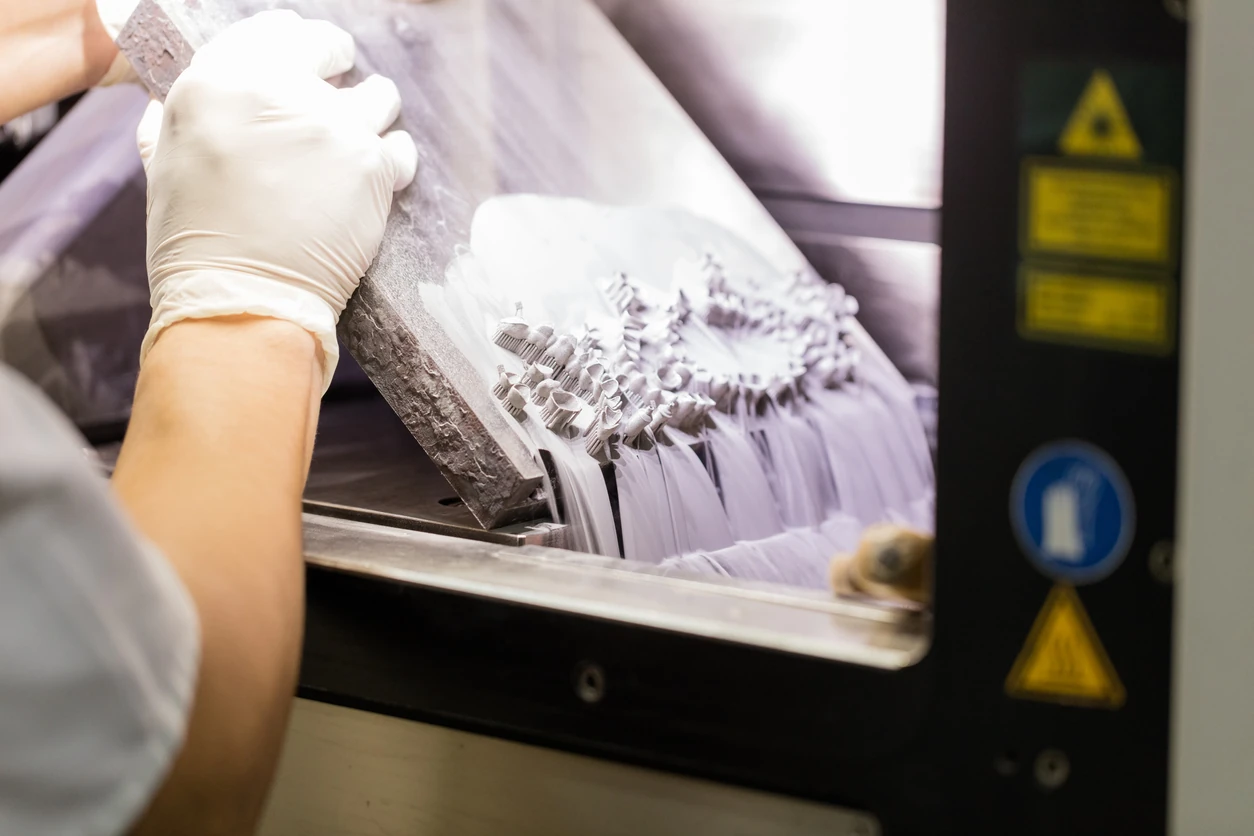
Post Processing of Metal Additive Parts
If you’re familiar with manufacturing, you’ll know that post-processing is the final stage in the additive manufacturing process – it’s where components receive finishing touches. Post processing can help improve a part’s aesthetics, geometric accuracy, mechanical properties, and more.
Three of the most common reasons for post-processing are:
- Smoothing out uneven surfaces - Lower the roughness to make it acceptable for end-use parts
- Increased strength - Strengthen printed components for increased stress resistance and to reduce fatigue failures
- Improved properties - Improve the material properties of the surface (i.e.- waterproofing & UV resistance)
The additive manufacturing method you choose will largely fall on desired surface finish and the end-use of the parts being manufactured. We’ve outlined some of the most common methods below.
Post-Processing Methods - An Overview
A variety of additive, subtractive, and property changing methods are available for metal additive parts, including:
Subtractive Techniques
- Tumbling - During tumbling, printed parts are placed in an abrasive granulate that smooths and compresses the surface, while rounding edges. Tumbling works better with rigid materials - flexible materials are more challenging to work with because they have an increased rebound to the abrasive granulate.
- Abrasive blasting - Metal additive parts are put in a drum and blasted, usually with glass beads, to remove loose material and improve surface roughness.
- Chemical Abrasive processes - Printed components are placed into a cabin and sealed against liquid and gas leakage.
- Other traditional manufacturing methods such as milling and grinding.
Additive Techniques
- Coating - A coating is applied by spraying or dipping. A wide range of colors are possible, though depending on the native color of the part, additional primers may be needed.
Property Altering Techniques
- Electrochemical Polishing - A chemical etchant is stimulated by electrical current to treat and smooth the internal and external surfaces of a part.
- Thermal Treatments - Thermal treatments to strengthen brittle parts.
When Should I Think About Post-Processing?
The term ‘post-processing’ itself implies that you do it after printing, so is that when you decide on an option?
The short answer is no.
The long answer? - You should be thinking about post-processing during the design process.
For example, if you mass produce a bunch of small medical components requiring a smooth surface, you’d use an abrasive or tumbling method – which are both subtractive methods – meaning they take material away from the object. Since material is being removed, you’d need to plan for it in the design phase so end-use components still meet specified requirements.
For the Future
Not too long ago, post-processing was only of marginal importance in metal additive manufacturing. However, as additive technologies advance, post-processing operations are increasingly becoming acknowledged as an integral part of the manufacturing process. More efficient ways of finishing components are being developed, while others are being automated to lower labor costs and lessen wasted time.
If you're interested in learning more about metal additive manufacturing, check out our resources.
